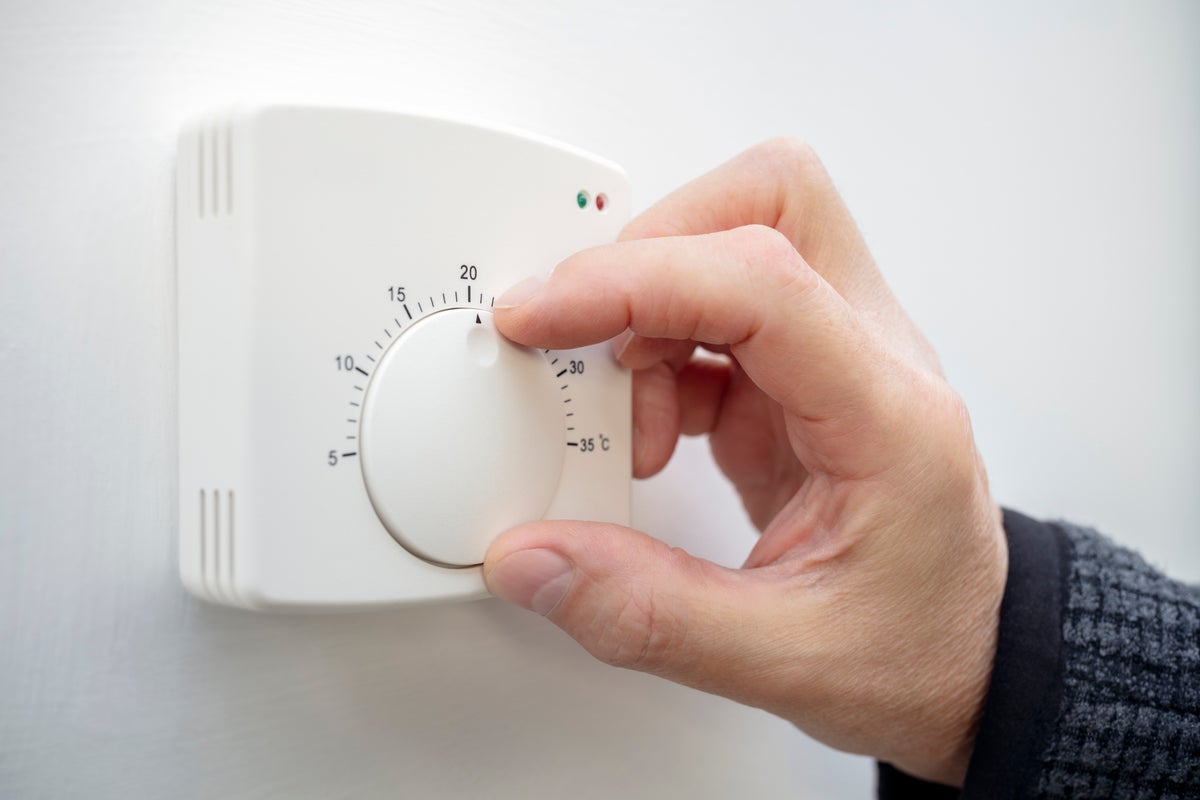British households can expect a slight respite from soaring energy costs as the energy regulator, Ofgem, has announced a 7 per cent reduction in its price cap, effective from 1 July.
This translates to an average annual saving of £129, or approximately £11 per month, for a typical household.
The Ofgem price cap dictates the maximum rate energy suppliers can charge customers per unit of energy used, as well as the standing charge.
It applies to consumers in England, Scotland, and Wales and serves as a benchmark for gas and electricity usage for households paying by direct debit.
It’s important to understand that the cap doesn’t limit the total bill, as consumers still pay for their actual energy consumption.
Higher than average usage will result in a higher bill, while lower usage will lead to a lower bill.
Energy regulation in Northern Ireland operates under a separate framework.
Why is the price cap falling?
Ofgem said a recent fall in wholesale prices was the main driver of the overall reduction.
Industry analysts Cornwall Insight said the fall followed US President Donald Trump’s aggressive tariff plans leading to a significant slump in gas and oil prices.
However, the 7 per cent cut is slightly reduced from a previously predicted 9 per cent drop after easing trade tensions in recent weeks.
Will bills continue to fall now?
Cornwall Insight said it expects the July fall to be followed by a “modest drop” in October and another similar dip in January next year – although these are only predictions, and the wholesale market is heavily susceptible to international politics and tensions.
Do I need to do anything to make the most of these falling prices?
Ofgem’s price cap determines the amount paid by households on a standard variable tariff – the tariff you will automatically be on unless you have actively sought out a cheaper deal by shopping around.
Ofgem has reminded households that no one has to pay the price cap, and there are better deals out there.
Uswitch said those moving to fixed deal – which could be with the existing supplier or another firm, and where the unit rates and standing charges are fixed for the length of the contract, usually a year – could save the average household £203 a year compared with the July price cap.
Latest Ofgem figures show 35 per cent of customers are currently on a fixed tariff, up from just 15 per cent a year ago when fewer offers were available.
How do I sign up to a fixed deal?
The first step is to seek out a comparison site, ideally one that lists all suppliers rather than only those who pay the site to advertise their deals. A quick search online will guide with this.
Comparison sites are easy to use and self-explanatory, but it will help to have figures from your current energy supplier on your yearly use of gas and electricity in units. This information should be clearly listed within your energy account with your current supplier.
Citizens Advice has a useful guide to switching, including all the factors to consider before you make the final decision.
My bill might be dropping, but isn’t it still very expensive?
Yes. While a 7 per cent fall from July is welcome, it simply reverses the 6.4 per cent increase imposed by Ofgem’s last price cap that has been in place since 1 April.
The average energy bill continues to be 10 per cent higher – almost £150 – than this time in 2024.
What’s more, prices are still 65 per cent – or almost £700 – above winter 2020/21 levels and a third higher – around £450 – than before Russia invaded Ukraine.
Looking further back, the price cap as we headed into the first Covid-19 lockdown was £1,179 – so costs based on the new July rate still remain 46 per cent – or £541 – higher than then.
What support is available for me?
Ofgem has previously announced an extension of the debt allowance, which supports suppliers in helping consumers get on top of their bills and stay on supply, reducing the physical and emotional harm that can result from self-disconnection.
Ofgem has urged people to make the most of any state benefits they are entitled to, which could help with paying energy bills as well as the wider cost of living.
Around 1.4 million pensioners are already receiving pension credit, but the Government estimates up to 880,000 further households are eligible for the support for those with a low income.
People receiving pension credit qualify for the winter fuel payment worth up to £300, to help with bills. Currently, those aged over 66 in receipt of pension credits or other means-tested benefits are eligible for the payment – amounting to an income threshold of £11,500.
Previously, anyone over state pension age could receive the payment, but this was changed by the Government. In winter 2024/25, around 1.5 million pensioners received the payment – a massive drop from the 10.8 million who received it the year before.
This week, Sir Keir Starmer announced that more pensioners would be eligible for winter fuel payments under upcoming changes to the scheme, although it is not yet clear what those will be.
I think I’m still going to struggle to pay my bills, what can I do?
You are not alone. Citizens Advice estimates that nearly seven million people live in households that have fallen behind on bills.
People are encouraged to contact their energy supplier if they are worried about paying their bills.
Energy companies are required to work with customers to agree on a payment plan they can afford, which could mean more flexibility over how and at what time people pay.
They should take into account people’s income and outgoings, debts and personal circumstances, and an estimate of how much energy will be used in future, for which regular meter readings can help build a more accurate picture.

